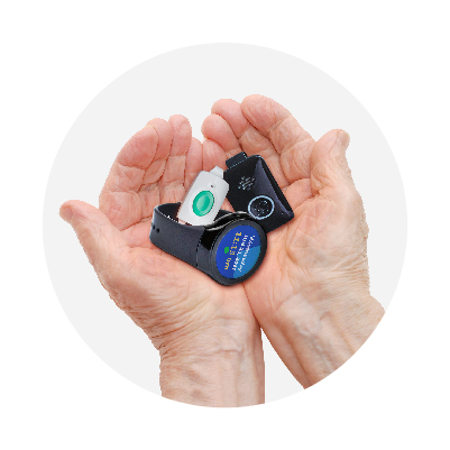By |

Updated July 22, 2024
If you’re shopping for a medical alert system, you’ve probably noticed some major differences in pricing. Many med alert companies charge a monthly or annual fee for their emergency monitoring service, and users can either rent or purchase the devices necessary to access emergency services. With Alert1, the button alert pendant or wristband is free to use, and our members pay only for the 24/7 live, professional monitoring service.
Below, we’ve unpacked some of the reasons why these systems follow a different price model – and why you’ll always get the best possible deal with an Alert1 system.
Are Free Medical Alert Systems Any Good?
Alert1 offers our members free use of our devices. They pay only for our 5 Diamond Certified emergency monitoring service. Our systems and service are as good or better than those more famous companies (you may remember the "I've fallen and I can't get up" company, for example).
- Lots of Choices – We have devices to fit every need, lifestyle, and budget. Want a simple in-home system? We've got it. How about a mobile wristband alert with GPS and fall detection? Yep, we have that too.
- Optional Fall detection – Just because your Alert1 device is free to use doesn't mean you won't get exactly what you want. We offer affordable fall detection systems in home units, mobile units, pendants, and wristbands.
- Great range – Our in-home system has a range of 600 feet, or the length of 2 football fields, while our mobile devices work anywhere in the 50 US states, plus parts of Canada and Puerto Rico.
- Choice of emergency contact options – In an emergency, we can contact both EMS and up to 3 contacts of your choice, in whatever order you prefer. Not everyone wants or needs an ambulance sent every time, so we make sure your family, friends, or neighbors can be contacted if you prefer.
What About the Service Rates for my Free Medical Alert?

Alert1 is proud to offer our members world-class service at the lowest rates in the industry. Compare us to Life Alert's costs and you will be very pleasantly surprised! Plus, we offer 2 plans for our members-- an annual plan that saves the most money, and a monthly plan. You may have heard that Life Alert has a 3 year service contract. Alert1 does not lock our members into long-term contracts. Our members stay with us because they enjoy great service, great selection, and great value!

